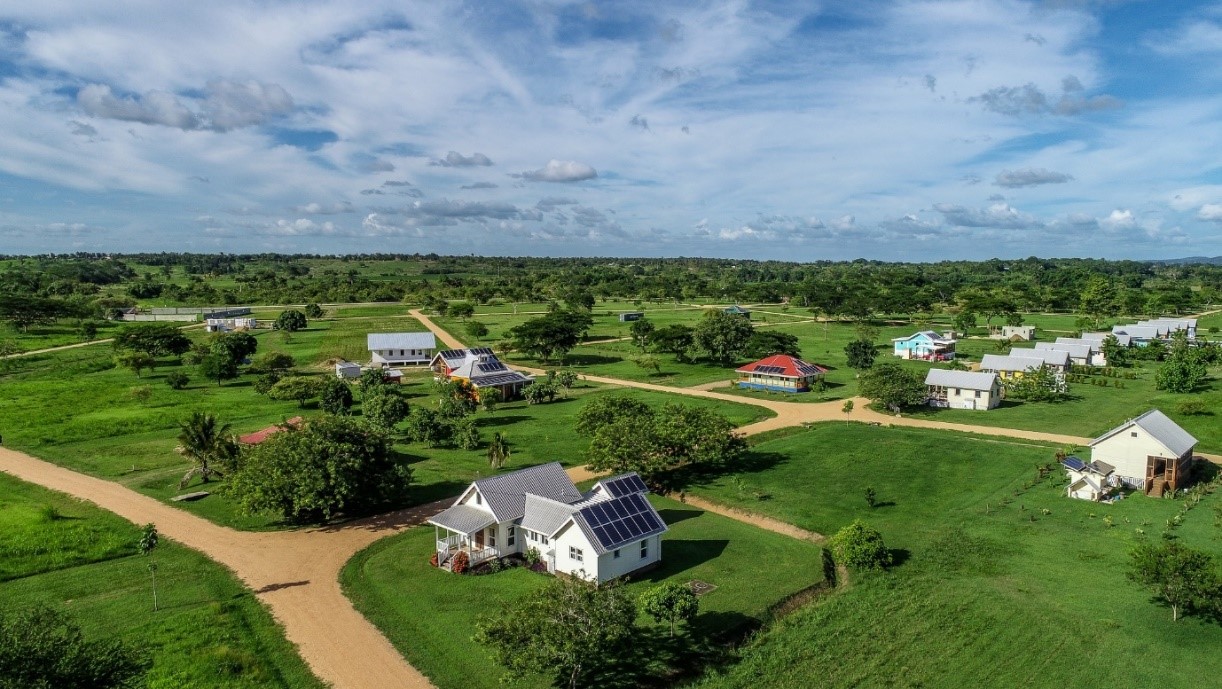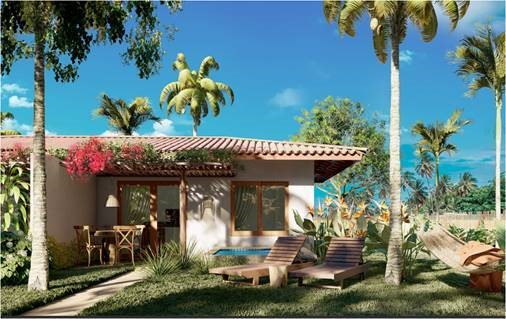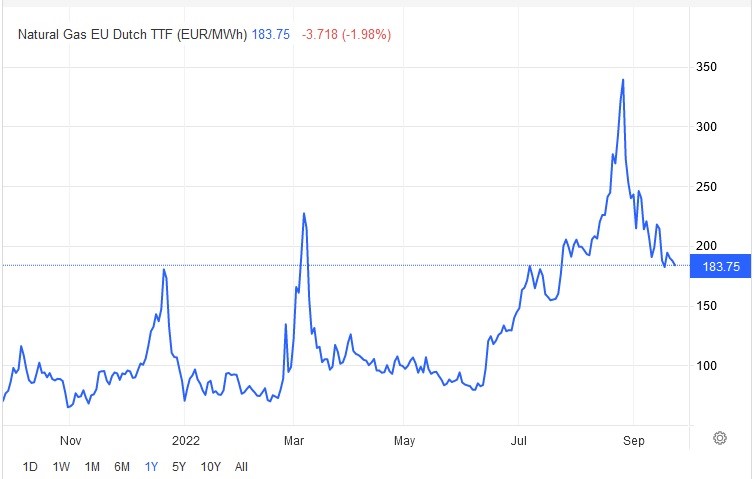Country Reviews Cayo, Belize Nowadays nearly every country is suitable for solar power generation... Even not-so-sunny Ireland. My brother has a solar power system next door to me here in Limerick. That said, the more sunshine a country gets, the more efficient a solar system you have.
Belize is a great destination for self-sufficient living. I lived in Belize for 14 years, including in several off-grid homes that had every modern electrical appliance imaginable. With 2,500 hours of sunshine per year, you can power your home with a small solar power system in Belize.
Belize is pleasantly warm year-round; temperatures stay above 50°F and below 97°F, so you can live without air conditioning or heating. It can get too humid at times, but it's nothing a fan can't help. Air conditioning would be nice to have, and a well-insulated home can make the energy required minimal.
With over 100 inches of rainfall per year, you can become water independent in Belize. You'll need large cisterns to see you through the dry season. Belize's high humidity levels makes atmospheric water generation a viable option, too.

Solar panels on Carmelita Gardens homes Belize's Cayo District, with its rugged, wide-open spaces, is my favorite part of the country. I've lived and worked at Carmelita Gardens, a model community for self-sufficient living, where residents generate their own power, collect their own water, and share a communal garden.
Carmelita Gardens offers turn-key house and lot packages starting at US$159,900 for solar-powered tiny houses. Off-grid bungalows start at US$224,000, and off-grid luxury villas begin at US$269,000. For more information about Carmelita Gardens,
go here.
Ceará, Brazil Northern Brazil is well suited to off-grid living, with 2,850 hours of sunshine per year for solar power generation and high rainfall for rooftop collection. You wouldn't need atmospheric water generation here, but given its high humidity levels, an AWG could be an alternative to air conditioning. A well-insulated home could easily run air conditioning from a small solar system.
Home food growing is possible year-round in Northern Brazil, though if you're close to the ocean, you'll have to improve the organic content of sandy soils or use modern soilless growing techniques like hydroponics.
To find out more about low-cost modern ocean-view bungalows that would be suitable to upgrade with off-grid packages starting at US$77,000,
go here.
Waterford, Ireland Waterford is one of the sunniest parts of Ireland... but that's only relative to the rest of the country.
Southeast Ireland is the least suitable destination for solar power generation in this report, with only 1,500 hours of sun per year. However, generous government grants make home solar systems economically viable. Wind power could be more suitable if you're located in a breezy area.
While traditionally too cold to go without central heating, all new houses in Ireland must now meet near passive housing design standards, but older houses might need upgrading. This will include replacing the heating systems with air-to-water heat pump systems which are four times more energy efficient than conventional electric heating.
Forty-one inches of rain also make Ireland moderately suitable for rooftop rainwater catchment, though consistent year-round rainfall makes it viable. Mains water is currently free, but this will change in time.
You won't need an AWG in Ireland, but you will need better home insulation.
Ireland has a shorter food growing season but its temperate climate is suitable for growing many cool weather crops. Production in a greenhouse is easier.
Kyrenia, Northern Cyprus Kyrenia is exceptionally well suited to solar power generation.
With only 12 inches of rain per year, an AWG would be your best option to become water independent, though periods of low humidity will affect your ability to generate water at certain times of the year.
Northern Cyprus is supplied with fresh water via a pipeline for agriculture from Turkey. While growing your own food would be more challenging in Northern Cyprus without a municipal water supply, using modern, low-water production techniques like hydroponics or aquaponics would make farming using just AWG systems viable.
Panama City, Panama Panama City and the surrounding areas are suited to solar power generation with 2,240 sunshine hours per year.
The high rainfall makes rainwater catchment viable, but given the humidity levels, an indoor AWG system would be comforting. You might want to get more panels and run an air conditioner.
If you want cooler weather in Panama, Boquete is a great option. Home food production would be more suited to interior and more elevated areas of the country.
Faro, Portugal Faro boasts 3,036 hours of sun per year, making it ideal for solar power generation and food growing. The moderate-to-hot temperature means air conditioning isn't required so long as you have fans or a well-insulated home. Also, many homes in the Algarve region come equipped with electric fans to keep the sun out and lower inside temperatures.
The meager 19 inches of rain that Faro gets means that to achieve water independence, an AWG system would be required.
Cádiz, Spain Cádiz is similar to Faro in climate and rainfall but tops our leaderboard for sunshine at 3,463 hours per year. There is a reason they refer to this area as the Coast of Light.
Very low precipitation makes rooftop water harvesting less viable. An AWG system would be best for water independence. Greenhouse production of conventional or hydroponically grown foods is ubiquitous around Cádiz.
Con Murphy
Editor,
Overseas Property Alert Your Own Profitable Beachfront Home—
From Just US$77k
 Nestled along the Northeastern coast of Brazil's pristine, white-sand beaches, lie these exclusive beachfront bungalows... Nestled along the Northeastern coast of Brazil's pristine, white-sand beaches, lie these exclusive beachfront bungalows...
This is your chance to capitalize on a booming vacation rental market with a hassle free, projected 10%+ annual ROI.
Whether you choose to spend a little or a lot of your time here, this little slice of beachfront paradise is a place where you (or your renter) can enjoy a laid-back, stress-free escape...
These beach bungalows start at only US$77,000, and are perfect for anyone looking for a hassle-free, profitable rental income.
This project is the kind of prime location, trophy property you won't see at a price like this again...
Alert: Only 7 properties remain available.
Head here now for more details on your US$77k beachfront home. |
|
Letters To The Editor "You spoke about the NHR tax status in Portugal last week. What happens after the 10-year relief period runs out?"
--Oscar T. After 10 years with Non-Habitual Residence status in Portugal, your tax-free foreign earning and reduced-tax local earnings advantages disappear. Before this happens, you should get comprehensive local tax advice about how to streamline your Portuguese tax liabilities after your NHR status expires.
Have a question? You can
write to Con here.
 |
The Latest From Overseas Property Alert... |
 |
Top Property Investment Picks This Month 





No comments:
Post a Comment